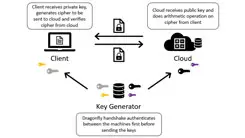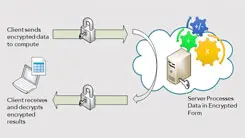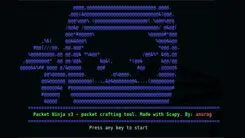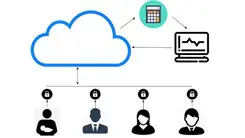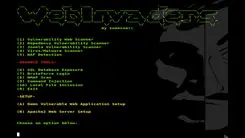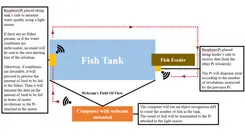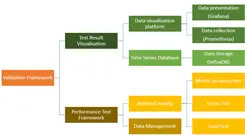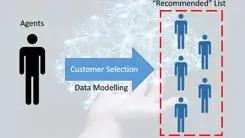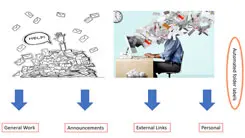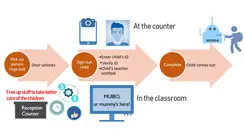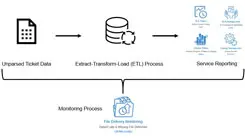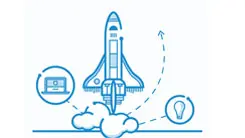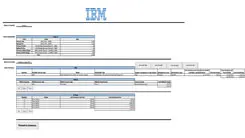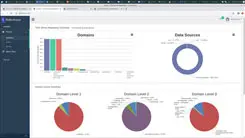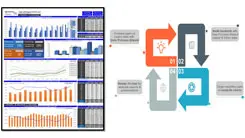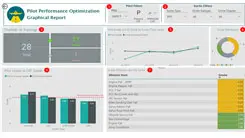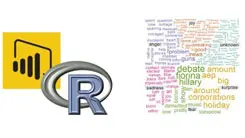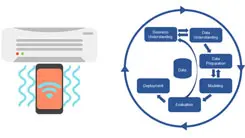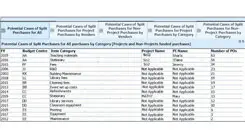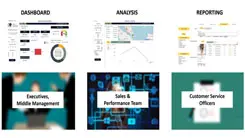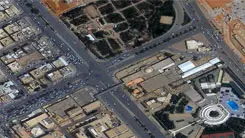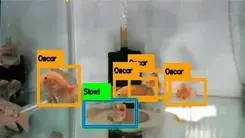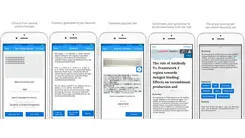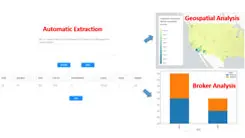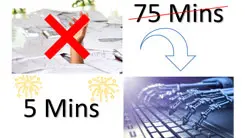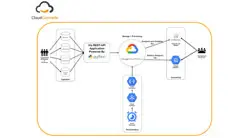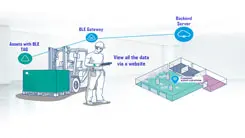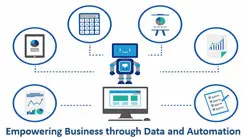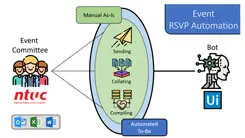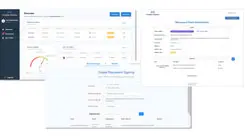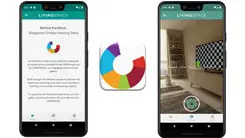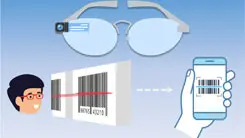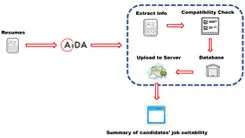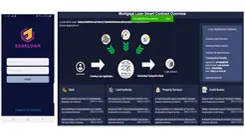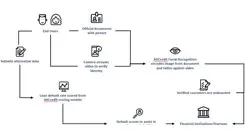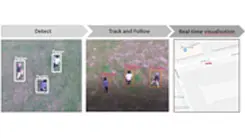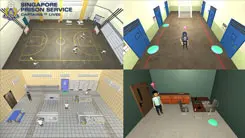
Dragonfly Key Exchange (IETF - RFC 7664)
Project Background
The Dragonfly Key Exchange is an extension of an ongoing research project on Arithmetic Circuit Homomorphic Encryption (ACHE) which was implemented based on (TFHE) Fast Fully Homomorphic Encryption over the Torus. Just like many Homomorphic Encryption methods, ACHE does not integrate with any authentication method. As long as any machine possesses the private key, it is able to intercept, decrypt and check the information being computed.
Dragonfly Key Exchange is an IETF standard (RFC7664) that uses discrete logarithm cryptography to achieve authentication and key agreement and claims to be resistant to active, passive and offline dictionary attacks. The same key exchange is also currently used as a new standard WPA3 by the Wi-Fi Alliance. Thus, this project focuses on the implementation of Dragonfly Key Exchange (IETF - RFC7664) into ACHE across different clients and machines.
This project was presented as a fast abstract in the 24th IEEE Pacific Rim International Symposium on Dependable Computing (PRDC 2019) in Kyoto, Japan.
Key Benefits
- Increased reliability – Ensures that only authenticated clients and machines are able to decrypt and obtain the information.
- More secure – Ensures that each conversation is separate and temporal, resistant to active, passive and offline dictionary attacks.
Key Technologies Used
- Dragonfly Key Exchange (IETF - RFC 7664)
- Ubuntu
- AES
- TFHE
Potential Enhancements
This application can be enhanced with the following:
- Implementing a database for key management.
- Implementing ASN.1 for standardisation of messages.
- Using GPU support to increase computation latency.
Project By
- Chan Jun Rong
- Soh Wei Jie
- Tan Li Xin
- Wee Jing Wei Shannen
Supervisor
Dr Yap Chern Nam
Floating Point Arithmetic Circuit Homomorphic Encryption
Project Background
Imagine you have a craving for coffee and start searching for a café online. Something as simple as this reveals data with third parties as they help satiate your caffeine crave – what you are seeking, where you are, what time it is, and more. If homomorphic encryption were applied, you would be able to ensure that your personal data are hidden from third parties, while still giving the third parties the ability to process your information to provide you with a better user experience.
Like many homomorphic encryption methods, Arithmetic Circuit Homomorphic Encryption (ACHE) only supports integer calculations and not floating-point. This project focuses on the implementation methods of the floating-point enhancement over the data source end to ACHE. An extension of an ongoing research project on Fully Homomorphic Encryption, ACHE (published as part of the IEEE CyberScience Conference 2019 in Oxford) was implemented based on Fast Fully Homomorphic Encryption (TFHE) over the Torus.
This project was published in the 13th International Collaboration Symposium on Information, Production and Systems (ISIPS 2019) in Waseda University, Japan.
Key Benefits
- Expanded usability – Expands usability of computations to include floating point numbers. This allows computations to be performed on decimals and numbers of high magnitudes.
- Improved expression of numbers – The new IEEE754 Floating Point Representation for numbers allows for a larger range to be expressed within 32 bits.
Key Technologies Used
- TFHE
- Ubuntu
- ARM
Potential Enhancements
This application can be enhanced with the following:
- Implementing a GUI for better user experience.
- Using GPU support for faster computation speed.
- Using signed computation of floating point addition/subtraction.
Project By
Supervisor
Dr Yap Chern Nam
ForensicPi – A Portable Forensic Analysis Tool
Project Background
Crime investigators race with time to solve cases. The main task involves recovering items and taking images of these items and taking the items to the lab for further investigations. Throughout this process, the integrity of the items must not be compromised. The present forensics tools are not always portable so investigation can only be carried out at the designated labs with the necessary tools in place. This creates a backlog of work for all the stakeholders of the respective cases.
The ForensicPi is a lightweight forensic analysis tool with all the 4 steps of forensic investigation encapsulated inside a Raspberry Pi. It is portable, easy to operate and carries with it a long battery life. With this analysis tool, image acquisition can be done on site and thus shortens the investigation time. Further investigation can be done in the lab without compromising any host machine.
This project would be useful for both law enforcement agencies and forensic investigation companies to shorten the investigation process at a faster rate and cheaper cost.
Key Benefits
- Convenient – With an 8-hour battery life, it is portable and easy to carry around.
- Comprehensive – It is able to run through the complete forensic process (collection, examination, analysis, reporting) in a single device.
- User-friendly – The programme is intuitive and easy to learn.
Key Technologies Used
- Write blocker
- File duplication
- Evidence labelling
- Bookmark
- Timeline
- Reporting
- Mandarin language conversion
Potential Enhancements
This application can be enhanced with the following:
- PDF report inclusive of timeline graph
- Full language conversion
Project By
- Mohamed Sulaiman S/O Mohamed Tayab Ali
- Ng Jia Hwee Cliff
Supervisor
Dr Yap Chern Nam
Mouseware Attack for Penetration Testing
Project Background
There are still a lot of misconceptions on cyber attacks. One of them is that cyber attacks are done with sophisticated devices with a high level of complexity. However, in reality, cyber attacks can occur with the simplest device with the most straightforward manipulation on the device.
The project Mouseware Attack uses a USB mouse as the device to infect the victim’s machine with malware. It is a type of Human Interface Device (HID) attack where the USB mouse device is modified with a hidden keystroke injection module to attack the victim’s machine.
The project aims to raise awareness that a cyber attack can be done using an unassuming HID device such as a USB mouse to infect machines with malware. Therefore, users should be careful of the HID devices they receive and take extra measures to protect themselves against such attacks.
Key Benefits
- Useful penetration testing tool – Simulates an attack to your computer system and helps you to identify vulnerabilities so you are better able to secure your computer system against this type of attack.
Key Technologies Used
- USB Mouse and hub
- Digispark module and Arduino scripts
- Metasploit
Potential Enhancements
This application can be enhanced with the following:
- Using other HID devices e.g. keyboard, USB hub etc.
- Hidden background keystrokes injection
Project By
- Goh Pek Siong
- Lee Jin Yuan
- Lye Pin Liang, Xavier
Supervisor
Mr Shaun Tan
Packet Ninja
Project Background
Did you know that hackers can still evade detection even though a system may have been with an Intrusion Detection System (IDS)? An Intrusion Detection System (IDS) is an application that monitors malicious activity based on rule sets. Most system administrators tend to use the default configuration in the IDS provided by vendors after installing the system, hence enabling attackers’ chances of evading detection.
Thus, these systems used by administrators have to undergo a current testing method called Packet Crafting prior to being deployed in a real-life environment.
Packet crafting helps system administrators to probe rule sets in an IDS and find entry points in a network. Users are expected to find their own crafting methods to test the IDS or they can source for other tools.
Packet Ninja is proof-of-concept tool developed by NCL that uses packet crafting to perform quick automated tests on IDS. It is available at the NCL testbed environment.Key Benefits
- Simplified coding – IP/TCP headers are pre-defined - User onlt needs to enter basic details like Source/Destination address and ports.
- Predefined methods – Scans, pings, DoS attacks, evasion techniques are predefined and provided as options.
- Customisable – The tool is written in python along with Scapy, users with basic knowledge of programming and TCP/IP protocols can customize the features in the tool.
- Flexible – Packet ninja uses scapy library; packets can be crafted in multiple ways.
Key Technologies Used
- Intrusion Detection Systems (IDS)
- Snort 2.9.15; Suricata 4.1.5
- Wireshark
- Python Libraries
- Scapy; Pycryptodome (AES-256); obfuscate 0.2.2
Potential Enhancements
This application can be enhanced with the following:
- Windows Support
- Additional features to test Host based Intrusion Detection Systems
- Emulate polymorphic attacks to evade frequency based detection
- Techniques dedicated to evade different types of firewalls
Project By
Anurag Prabhakar
Industry Partner
NCL
Supervisor
Mr Lim Kim Seng, Jet
Secure Cloud Data with Multi-Key Homomorphic Encryption
Project Background
More and more confidential data has been stored on the cloud. These include personal information like biodata and healthcare records. Encryption is a technology used to ensure the confidentiality of such information. However, this confidentiality affects the processing of such data. For example, predictive analytics cannot be done on the data holders’ healthcare records. This might result in the data holders not getting the benefits they could otherwise.
The Fully Homomorphic Encryption project addresses such concerns as computations can be done on encrypted data without the need to access the encryption keys. Multi-Key Homomorphic Encryption goes a step further by allowing multiple parties to encrypt their inputs separately using different keys. Despite this research project being an implementation and feasibility test of the Multi-Key Homomorphic Encryption on daily computing, this technology can be further enhanced to enable secure electronic voting schemes.
This project will be published as a poster presentation at the International Conference on Distributed Computing Systems (ICDCS 2020).
Key Benefits
- Secure – Computations can be operated on encrypted data without access to encryption keys, thus ensuring the confidentiality of the data is not compromised.
- Versatile – Multi-Key Homomorphic Encryption allows multiple parties to encrypt their inputs separately, using different keys.
Key Technologies Used
- Fully Homomorphic Encryption
- Multi-Party Computation
Potential Enhancements
This application can be enhanced with the following:
- Distribution of cloud and end-user roles across multiple machines.
- Transfer of cryptographic keys across the network (e.g. Diffie-Hellman key exchange).
- Performance optimisation by parallelism of processes (e.g. OpenMP).
Project By
Chong Kok Seen
Supervisor
Dr Yap Chern Nam
NCL Web Invaders
Project Background
Web application attacks have been on the rise. Even though there are many penetration tools available currently, these are open source tools that are outdated and cumbersome to use. Also, many processes are not automated and require users to manually carry out checks.
An effective web penetration testing tool needs to be easy to use and convenient to deploy. NCL Web Invaders, an all-in-one web penetration tool which encompasses these features for the testers. It aims to provide penetration testers with an automated tool and automated set-up of the simulation testing grounds. With this, web penetration testers can easily carry out the vulnerability test on any web application.
These easy-to-use and quick-to-install tools enable a web developer with little knowledge of penetration testing to test their web application for vulnerability during the staging process. Besides, the tools also provide a penetration tester the mobility and flexibility needed.
Key Benefits
- Easy automated installation – It can be done through a single command, cuts down the effort and time required.
- Ready site for Web Penetration Testing – Testers have a place to hone their skills, reducing the hassle to search for vulnerable sites.
- Report generation – It generates reports to help users to better understand the task.
- Open source – No licensing is required.
Key Technologies Used
- Arachni Web Vulnerability Scanner
- Joomla CMS Scanner
- Dependency Checker
- IdentWAF
- Scan.io API
- VirusTotal API
- NMAP
- SQLMap
- Hydra
- Commix
- LFISuite
Potential Enhancements
This application can be enhanced with the following:
- Other websites cookie scraping
- Web Application Firewall Bypass
- More automation in the setup process
Project By
Bryan Swee
Industry Partner
NCL
Supervisor
Mr. Lim Kim Seng, Jet
AI & Analytics
Automated Fish Feeder
Project Background
In aquaculture, automated fish feeder is an innovative method of feeding fish. However existing automated fish feeders in the market dispense a fixed volume of food, resulting in overfeeding. This causes poor water quality due to excess fish food.
To achieve optimal water quality, an automatic fish feeder that is programmed to dispense food based on fish count and water quality is designed. The feeder makes use of object recognition to count the number of fish and detect fish species, and uses a Light Dependant Resistor (LDR) to measure water quality.
This project was shortlisted for Stage B of the Splash Awards 2019 organised by the Singapore Computer Society (SCS).
Key Benefits
- Increased productivity and profits – Reduces manual work for farmers, allowing them to channel efforts and resources into other aspects of business.
- Better yield – Fish that are fed using automatic feeders are healthier and weigh heavier compared to fish that are fed manually.
Key Technologies Used
- Raspberry Pi
- Tensorflow
- Python
- Secure Shell (SSH)
Potential Enhancements
This application can be enhanced with the following:
- Implementing a GUI (graphical user interface)
- Incorporating a tracker to monitor fish health
- Developing a mobile app for easy deployment and tracking
Project By
- K Mohamed Sharaafat
- Lim Hui Yang
- Toh Ke Han
Industry Partner
Agri-Food and Veterinary Authority of Singapore
Supervisor
Dr Yap Chern Nam
Youtube
Automated Product Validation and Verification Testing
Project Background
The Diagnostics Support System is a medical device that harnesses deep learning technology to analyse medical images. The core of the system is an Artificial Intelligence (AI) Engine that compiles all the predictive deep learning (DL) models. It processes and predicts images, and presents the prediction results in a web user interface (UI). In the last stage of product development, the quality assurance (QA) test serves as an important reliability check before the device is released for production and availability to the market.
Current practices for QA testing are mainly focused on DL models testing and the manual testing of the functionalities of the UI in user acceptance and functional tests. These tests are not foolproof. Technical glitches or issues in the backend architecture of the system, which do not show up during UI testing, could be overlooked. To resolve the issues effectively and efficiently, a test automation and validation framework is built.
This project is currently implemented in the QA test plan of BioMind.
Key Benefits
- Real-time – Provides real-time visualisation of outputs.
- Reliable – Increases test coverage, reports technical glitches, compares performance across releases, and improves traceability of test results.
- Efficient – Raises productivity of the whole product development life cycle.
Key Technologies Used
- Python
- Shell
- InfluxDB
- PostgresQL
- Prometheus
- Grafana
- Github
Potential Enhancements
This application can be enhanced with the following:
- Simplifying and improving user-friendliness for new users.
- Improving the error tolerance of some scripts.
Project By
Wei Yifan
Industry Partner
BioMind
Supervisor
Dr Zhang Huiyu
Automation for Shipping and Logistics Services
Project Background
The Saudi Basic Industries Corporation (SABIC) is a client of PSA Corporation. It is also the largest public company in the Middle East and Saudi Arabia which is ranked among the world’s largest petrochemical manufacturers. Mostly due to Singapore’s geographical location and PSA Corporation’s success as the world’s largest transshipment hub which interconnects 600 ports across 120 countries worldwide, SABIC engaged PSA Corporation for its core business of transshipment.
A solution was designed to automate the transshipment operations of goods for SABIC via the digital ecosystem and streamline their flow of goods regionally. This is attained with the use of the Robotic Process Automation (RPA) software, UiPath, which possesses Artificial Intelligence and Machine Learning capabilities to handle high-volume, repeatable tasks that previously required humans to perform.
Hence, the project was effective in helping to reduce the man-days for the job and the operational costs, thereby improving the day to day processes in the organization.
Key Benefits
- Accurate – Eliminates Human Error
- Efficient – Reduces Turnaround Time and Increases Throughput
- Inexpensive – Requires little to no integration in the enterprise.
Key Technologies Used
- UiPath (Studio and Robot)
Potential Enhancements
This application can be enhanced with the following:
- Integrate Programming Languages beyond its Integrated Development Environment (E.g. VBA in Excel)
Project By
Ang Xiang Ying
Industry Partner
PSA Corporation Limited
Supervisor
Ms Ramsamy Sakthivelu Maheswari
Youtube
Data Modelling for Customer Selection
Project Background
One of the challenges for businesses is to manipulate enormous amounts of data to try to understand how to effectively engage individual customers. How should we segment our customer base? Who are our loyal customers? How can we leverage data to better understand our customers? These questions are raised by both businesses and analysts in customer analytics.
This Customer Selection Loyalty Programme employs a predictive model using Machine Learning, whereby agents are able to select customers at the click of the mouse. Instead of having to manually go through the entire database to select each customer eligible for rewards, the model is able to automatically determine and recommend a list of customers based on the data source provided.
This project was piloted in an insurance company from July 2019 to January 2020.
Key Benefits
- Efficient – Reduces manual workload for data analysts.
- Time-saving & Improved Decision-making – Reduces time spent on selecting customers manually, allowing agents to make better decisions and focus on higher-value work.
Key Technologies Used
- Python & Libraries in Python (e.g. Pandas & Scikit Learn)
- Jupyter Notebook
- Binary Classification Models (Logistic Regression, Naïve Bayes, Random Forest, Gradient Boosting, Decision Tree, K-Nearest Neighbors, Neural Networks)
Potential Enhancements
This application can be enhanced with the following:
- Implementing Forward Testing to validate model performance.
- Widening scope to tackle other issues in the programme.
Project By
Saud Abdul Rahman Al Homied
Supervisor
Ms Ler Lay Guat
Email Classification Tool
Project Background
How often have you found yourself in these situations: opening a messy email inbox, trying to find a specific email but have no idea which folder it resides in, or spending more time than necessary reading emails? The Email Classification Tool can help you sort your emails into appropriate folders, and filter dubious emails to prevent scam or fraud.
Using machine learning and artificial intelligence, the Email Classification Tool is able to give intelligent recommendations and classify each email based on its context. As the model is trained for both supervised and unsupervised learning, it can help you find an email based on a specific keyword or term. It is also possible for you to find all emails with similar contents, avoiding the hassle of having to search for similar emails one by one. This will save you time from reading and processing irrelevant emails, thereby increasing your work productivity.
This project is currently undergoing development by SwiftX Solutions Pte. Ltd. for future use.
Key Benefits
- Productive and Efficient – Emails are sorted automatically with the upload of a dataset.
- Usable – Able to use any email data set for clustering, even if email is unlabelled.
- Secure – Suspicious emails are filed into the spam/fraud folder.
Key Technologies Used
- Python
- Scikit-Learn
- Natural Language Tool Kit (NLTK)
- NumPy
Potential Enhancements
This application can be enhanced with the following:
- Using a company’s actual data to achieve better accuracy
- Creating an email application for the front-end
- Creating an automated reminder system for work-related matters
Project By
Teo Tze Min, Janelle
Industry Partner
SwiftX Solutions Pte. Ltd.
Supervisor
Dr Linda William
Enhancing security and business cost in preschooler management with MUIBO
Project Background
The current local practice at child-care centres whenever a parent or guardian comes to pick up the child, is to have the center’s front-desk staff visually identify and verify the pick-up person, then call out to the respective child in the classroom. For fresh enrolments, it has always been a challenge for the staff to do so as it takes weeks for them to associate the pick-up person with the child. Imagine the stress levels of the staff in a mega childcare centre who interacts with a thousand of pick-up persons. To add to the woes, each child enrolment is allowed to register up to four pick-up persons.
MUIBO, a deep learning technology-enabled automated recognition and notification system, is here to implement the security measure of identity verification and business-cost enhancement by deploying staff for higher-value roles rather than merely manning the front-desk.
MUIBO is currently piloting at Little Skool House @ Temasek Polytechnic.
Key Benefits
- performs accurate validation of the pick-up persons by facial and voice recognition and behavior analytics;
- skips the hassle and need to use large amount of data; and
- provides a tech-enabled service platform that can be adaptable to suit other image/video analytics contexts.
Key Technologies Used
- Deep learning frameworks including Caffe and Tensorflow
- OpenCV
- Python
- Raspberry Pi
Potential Enhancements
This application can be enhanced with mask detection and be made available in APIs to sync and integrate with the different applications when necessary.
Project By
- Chan Jingzhi (Project Leader)
- Brendan Yap Ming Thye
- Hasbullah Bin Kamsin
- Sri Nur Athirah Binte Zaini
- Tan Shan Kang
Industry Partner
Little Skool House @ Temasek Polytechnic
Supervisor
Dr Zhang Huiyu
Youtube
Enterprise Service Reporting Tool
Project Background
The Enterprise Service Reporting Tool is a data visualisation web application. It works in tandem with an Extract-Transform-Load (ETL) data analysis integration process, in order to generate automated and on-demand reports on vendors and technology services.
The service reports serve to track and measure the performance of the organisation's IT vendors in order to ensure that vendors follow the Information Technology Infrastructure Library (ITIL) standards and meet the agreed Service Level Agreement (SLA). This tool also incorporates a portal for all vendors and operators to easily update the status of their service. This allows for remediation via a file delivery monitoring process in the event of non-submission of file updates.
Furthermore, the reports highlight each transition process and presents the analysis based on the risk involved and its priority. This allows for senior management to derive detailed business decisions which are both risk and priority-weighted.
The Enterprise Service Reporting Tool is currently being used by a leading investment organisation in Singapore.
Key Benefits
- Risk-weighted decisions – Resources can be properly allocated based on the risk analysis of the upcoming transition processes.
- Convenience – The report-generating process is fully automated without the need for human interference.
Key Technologies Used
- C Sharp (C#)
- Active Server Page Programming (ASP.NET)
- JavaScript
- HighCharts.js
Potential Enhancements
This application can be enhanced with the following:
- Performance profiling of each business unit's service for in-depth analysis.
- Automated alert notification to business unit's service personnel when feed files are delayed.
Project By
Ang Rui Yan
Industry Partner
Leading investment organisation in Singapore
Supervisor
Mr Lim Beng Kee, Ryan
Machine Learning Made Easy with Rocket Financials
Project Background
Training accurate machine learning models is a tedious process; it requires many iterations of data transformations and in-depth programming alongside knowledge of mathematical formulas. As such, many non-technical business individuals are afraid of stepping into machine learning, resulting in them not fully utilising their customers’ data to gain more insights into how to better serve their customers.
Rocket Financials is a user-friendly web application with a simple interface that enables these non-technical users to perform automated machine learning easily, without the need for coding. With the automated data transformation and machine learning features, building a machine learning model can be done within clicks, hence simplifying the entire process.
This project was presented during SAS’ 2020 Front Line Experience (FLX2020) at the Marina Bay Sands Convention Centre to over a thousand pre-sales and sales members from across the world.Key Benefits
- User-friendly – App requires zero coding and the user is assisted during the entire process.
- Time-saving – Automated data transformation provides the most suitable transformation type for the data variables thus removing the time-consuming trial and error process. Now the variables can be passed on to the machine learning stage directly.
Key Technologies Used
- SAS Viya 3.5
- Open Source JavaScript libraries such as D3
Potential Enhancements
This project can be enhanced to include testing and handling of actual clients’ data.
Project By
Muhamad Syafiq Akmal Bin Supri
Industry Partner
SAS Institute Pte Ltd
Supervisor
Mr Surojit Dutta
Youtube
https://www.youtube.com/watch?v=dsF5F0QT0aI
Network Cost Sizing Template for New Office
Project Background
Tired of manually scrolling up and down the 10 over different Excel workbook just to check the price of a certain IT plan? Let the Network Cost Sizing Template do the searching for you with just a few clicks on it that saves time and effort all at the same time.
The Network Cost Sizing Template is a budgeting tool allows you to select the various IT equipment and bandwidths of your choice that will generate the total cost within minutes. Using Microsoft Excel functions and macros, it acts like an e-commerce platform that allows Users to add or delete IT equipment with the prices showing up instantly. It also allows Users to change up to 9 different currencies which means no effort for currency converting is needed. First-time users do not have to worry of choosing unmatched IT plans because there is a built-in function of error-checking. A budgeting summary page will also be shown at the end in a clear and organized manner that is meant to be submitted to the relevant departments for approval.
Key Benefits
- User-friendly – This template is both easy to use and maintain for future purposes
- Productivity – Saves time and effort for Staff to complete the process as compared to the original manual process approach
Key Technologies Used
- Microsoft Excel
Potential Enhancements
This application can be enhanced with the following:
- Integrate with an interactive Chatbot
- Enable automation processes with 3rd party automation software to further enhance productivity
Project By
Teo Pin Bo
Industry Partner
International Business Machines (IBM) Pte Ltd
Supervisor
Mr Goh Kai Song
Youtube
Optimise your Data with Time Search DB
Project Background
In Rolls-Royce, developers and users have to go through the inconvenience of gathering information on open source time series data and in-house data they need from various locations. There was no centralised location to house these data presently.
Time Search DB is a time series database and a web application. It could be used to store open source time series data from various domains and sources. Rolls-Royce could also load their data into it for business purposes. The web application would then allow users to search, view, upload and download each series data independently.
This project aims to streamline the process of viewing and obtaining the Rolls-Royce’s in-house or open source time series data, thus enabling the developers to enhance and validate their machine learning approaches.
This project is part of a larger project by the Future Intelligence Technologies team in Rolls-Royce Singapore Central Technology Group that uses data to empower decision-making. It has helped save millions of dollars for the company.
Key Benefits
- Scalability – With the use of Elasticsearch, tens of thousands of records can be loaded into the database without affecting much of the speed in searching.
- Convenience – The centralised database of open source time series data is a one-stop solution to gather insights of various domains and data sources.
- Ease of use – Simple and clear user interface and layout.
Key Technologies Used
- Elasticsearch
- Python
- Flask
- Web Development Tools (eg. CanvasJS, jQuery, JavaScript)
Potential Enhancements
This application can be enhanced with the following:
- A login system where the user’s activity can be tracked, and more development can be done to enhance user activity.
Project By
Ezekiel Ghe En Zhe
Industry Partner
Rolls-Royce Singapore Pte Ltd
Supervisor
Mr Goh Kai Song
Youtube
Palm Oil Fundamental Analysis Dashboard
Project Background
The Palm Oil Price & Fundamental Analysis Dashboard provides comprehensive charts to enable a quick analysis of the palm oil market. It presents price trends of both futures and physical markets against fundamental factors which affect palm oil prices. It was specifically designed for the palm oil analysts in the Refinitiv Oil Research team.
The first crucial building block of this dashboard is the Data Process Wizard. It is innovatively programmed to gather raw palm oil export data from two different organisations, and to combine them into a comprehensive palm oil export volume data set. Another data source is the financial instruments’ data retrieved from Eikon. Collectively, these sources come together to form this interactive dashboard which serves to automate and speed up the work process for Refinitiv's palm oil analysts.
This dashboard is currently in use by the analysts in the Refinitiv Oil Research team.
Key Benefits
- Saves time – Highly automated process to improve the workflow and eliminate human error.
- Enables more effective analysis – Interactive in-depth charts present data in highly visual formats to simplify the market analysis.
Key Technologies Used
- Excel VBA
- Thomson Reuters Eikon
Potential Enhancements
This application can be enhanced with the following:
- Publishing to Eikon – Development of new functionalities to enable publishing of the charts and data tables on the Palm Oil Section in Eikon.
Project By
Cai Zhencong
Industry Partner
- Refinitiv
- Malaysia Palm Oil Board (MPOB)
- General Society of Surveillance (SGS)
Supervisor
Mr Wong Kok Keong
Youtube
Pilot Performance Optimization Graphical Report
Project Background
Ever since the introduction of unmanned aerial vehicle (UAV) technologies, the military landscape has changed dynamically. Autonomous drones controlled remotely by specialists conduct aerial operations, surveying ground activity, all done without incurring losses to human life; UAVs can be exploited for such purposes. Hence, personnel trained to operate UAV systems must participate in trainings to recondition their skills, dubbed sorties.
The Pilot Performance Optimization Graphical Report (PPOGR) is a comprehensive and interactive graphical interface encompassing UAV pilot performance assessment data from live and simulated sorties into intuitive visuals. However, it is not just a graphical report, but also a data pipeline comprising backend executable data pre-processing scripts, which extract simulation and assessment data from sorties, processes these into a context-relevant format for analysis, and pumps them to a database for storage. The cleansed data is then presented in an intuitive dashboard, of which insights can be drawn from to answer pilot requirements and alleviate pain points in performance assessment and recommendation.
Key Benefits
- Streamlined pipeline: Established a pipeline for data extraction, processing and storage, providing many opportunities to use the cleansed data.
- Straightforward & succinct analysis: Provides a broad overview of performance assessment parameters with drilldown capability, consolidated into charts for clear-cut analysis and instant insights.
Key Technologies Used
- Excel VBA
- MySQL
- Microsoft PowerBI
- Python
Potential Enhancements
This application can be enhanced with the following:
- Enhanced pipeline infrastructure to support database pull-and-push functionality, data staging, automation.
- Introduce standardized data collection form with dropdown functionality across the organization to eliminate data errors, ensure integrity of data.
Project By
Brendan Yap
Industry Partner
Defence Science and Technology Agency
Supervisor
Ms Imanishi Nami
Youtube
Power BI & R Text Analysis
Project Background
As the world grows increasingly digital, higher levels of management are starting to request analysis into customer comments to assist them in making decisions. While they are many different software for text analysis, most of them cost money, thus straining the resources of the data analysis department or forcing employees to use their personal funds to deliver the requested reports.
This project, Power BI & R text analysis, is a 0 cost Power BI dashboard that utilises R codes and Power BI’s inbuilt R visualisation functions to deliver a dashboard containing graphs that easily identifies and conveys keywords and sentiments from customer comments. The key features of this project are that it is easy to use, maintain and interact for people without a data background at no cost.
Currently, the service data team in Canon Singapore is using this project to analyse customer sentiments obtained through their post service survey data.
Key Benefits
- Easy to use/maintain – Just hit the refresh button after overriding the old data with the new one. Graphs convey important information at first glance.
- Scalable – Sheets can be added, removed or customised to suit the changing needs of the department.
- 0 cost – The technologies used, R & Power BI are open source software and do not cost any money.
- Interactive – Through the use of Power BI slicers, higher levels of management do not need a data background to interact with the graphs.
Key Technologies Used
- R & Rstudio (and various packages such as tm and udpipe)
- Power BI
Potential Enhancements
This application can be enhanced with the following:
- Exploring other text analysis functions through R.
- Optimising the code to run faster.
Project By
Chua Jing Shen Brandyn
Industry Partner
Canon Singapore Pte Ltd
Supervisor
Mr Lim Kok Yau
Youtube
Predictive Model for Optimising Air-Conditioner Usage
Project Background
Singapore takes the throne for the highest air-conditioning installation rate per capita among the ASEAN countries. A whopping 40% of our utilities bill comes from the usage of air-conditioning in our homes. As a result, a large amount of carbon dioxide has been released into the atmosphere. Thus a more efficient way to utilise the air-conditioner should be explored.
The Optimal Start/Stop predictive model uses Outside Air Temperature (OAT) and Outside Relative Humidity (ORH) to predict the time taken to cool down the room to an optimum temperature of 24 degrees Celsius and the duration of which the room can be maintained at that temperature. This helps the users to calculate how much time they need to leave the air-conditioner on and thus enables a more efficient use of the air-conditioner.
This project was used for the Estates & Facilities Management department in Temasek Polytechnic in its effort to conserve energy.
Key Benefits
- Saves Energy and Money – The energy conservation from minimising air-conditioning will lead to a decrease in the utility bills. In addition, it will also reduce the amount of carbon dioxide released into the atmosphere.
Key Technologies Used
- Main application/language
- Python on Anaconda
- Data Preparation
- NumPy, Pandas
- Extraction of data based on date and time
- ‘Datetime’ module
- Predicting Cooling Time
- Scikit-learn
- Elastic Net Regression and Linear Regression
Potential Enhancements
This application can be enhanced with the following:
- Automated switch on/off feature.
- Ability to set the preferred temperature.
Project By
Sri Nur Athirah Bte Zaini
Industry Partner
Azendian
Supervisor
Dr Linda William
Youtube
Procurement Dashboard
Project Background
With numerous purchase requisitions being submitted and processed by the procurement team daily, the company had to analyse the different types of purchases made to make informed decisions and understand their progress in achieving their goals. In addition, split purchases may occur due to staff’s negligence in the rules and regulations of procurement. The existing methods of the company were through Microsoft Excel. However, the process was repetitive and tedious with no automation feature included.
The Procurement Dashboard is developed with the aid of QlikView to provide the team with the ability to analyse any patterns of the purchases and identify potential split purchases with automation. The automation increased the workplace’s productivity and ensures no human intervention which increases the reliability of the data. The company can now generate the insight they require within minutes and with no error.
The project is currently utilised in Singapore University of Technology and Design.
Key Benefits
- Efficiency - All the necessary information is now generated and presented readily in an accurate, reliable and structured manner with no human intervention which may potentially be error prone.
- Capability - Complex data models are now built based on defined parameters to help the users to scan the database for potential cases of split purchase.
- Valuable Business Decisions - Charts and tables are provided for better visualisation, comparison, and comprehension of past years transactions profiles and trends. This information can then be used for quality decision making such as identifying possible potential purchases for demand aggregation in the future.
- Enhancing the Governance and Compliance - With higher rates of identified split purchases, staff are unlikely to perform them.
Key Technologies Used
- QlikView
Potential Enhancements
This application can be enhanced with the following:
- Include a third-party data managing software that allows automation in reading new parameters
- Utilising better software tool to allow selection of varying combinations of parameters that could potentially be a case
- Perform predictive analysis with scikit-learn library in Python
Project By
- Tan Hui Xuan
- Ng Jing Jie
Industry Partner
Singapore University of Technology and Design
Supervisor
Mr Lim Kok Yau
Youtube
Real-Time Data Visualisation
Project Background
A picture says a thousand words. How often have you come across an article or report and thought, ‘I wish there was a picture or diagram instead of a lengthy description’? With data visualisation – the representation of data and information through charts and diagrams – information can be communicated clearly and in a much faster way.
In this project, QlikView, an end-to-end platform, is used to create an application, which allows different functional groups in business to analyse data easily and use data discoveries to support decision making. Data is first extracted from various sources. Then, in-built functions and external macros are used to transform the data and shaped into the preferred star schema for increased efficiency, better script and performance run time. The data are utilised to create an application comprising various dashboard, analysis and reporting tabs for different line-of-business stakeholders.
This project is currently seeking potential partners to bring the application to market.
Key Benefits
- Customised data visualisation – Adheres to needs of different users.
- Enhanced assimilation of information – Data discoveries facilitate decision-making to achieve end-analysis goals.
- Quick access to relevant business insights – Enables real time data reload to reduce time-to-insight.
Key Technologies Used
- QlikView
- JavaScript
Potential Enhancements
This application can be enhanced with the following:
- Migrating QlikView application to QlikSense.
- Limiting data access based on permission using prefix ‘Section Access’ to ensure integrity and security of the application.
Project By
Chan Min Ai
Supervisor
Dr Zhang Huiyu
Satellite Imagery Segmentation
Project Background
The proliferation of Satellite Imagery has given us radically progressed our understanding of our planet. We can achieve everything from mobilizing resources during disasters to monitoring the effects of global warming. However, as the years pass by, there is an increasing number of data and it is expected of these large and complex datasets to continue to boom exponentially in number. What is often taken granted for is that the advancements have relied on labelling features of significance through imperfect semi-automated methods. Nobody knows what is happening on the back-end: Image analyst can no longer handle the huge amount of data. Therefore, the automatic feature labelling in this project can effectively aid the Government in making smart decisions efficiently for the defence and security of Singapore and bring innovation to computer vision methodologies applied to satellite imagery without tedious work by the Image analysts.
With the increased tension between Iran and the U.S., it is important for Singapore to enhance its national defence to protect ourselves in time for war. This project aims to enhance Singapore’s national defence with its ability to detect movements from other countries such as the construction of missile testing sites, nuclear reactor facilities, detection of the convoy, and invisible ships using machine learning. Invisible ships are related to very urgent development and security problems such as dangerous sea migration, trafficking of people or goods, sea accident rescue operations, and lastly, illegal fishing and piracy.
Key Benefits
- Enhances Nation’s security and defence: Singapore can now detect the movement of many vehicles moving together towards the direction of Singapore automatically, roads and buildings can also be detected. Upon detection, a Strategic Defence Initiative can be thought of. Apart from detecting the movements from other countries, this project can also be used for Invisible ship detection.
- Convenient: There will no longer be a need to task so many military staffs on duty for surveillance or sit in front of a CCTV camera footage as satellite images have greater large-scale scientific applications.
- Efficient: With the increased AI computing strength, it is now feasible to mix fairly detailed images over big areas, mapping the “before” and “after” images to offer real-time insights.
- Informative: Helps in the forecasting of weather and GPS systems other than telling us the movements from other countries or invisible ship detection.
Key Technologies Used
- SAS DLPy
- SAS Viya
- Python
- Deep Learning
- YOLO Object detection
- Tiffile
- Pillow
Potential Enhancements
This application can be enhanced with the following:
- High accuracy of convoy detection at night using Short-wave Infrared to better segment the different classes of objects.
- Training the model with actual Asia satellite images for better prediction and accuracy
- Using the same approach, but a change in use case:
1. Transportation companies depend on real-time satellite imagery to assist the understanding of visitor’s flow patterns to relieve congestion.
2. For city economic advisors, images of parking lots in the front of a large retailer before main shopping holidays can assist to predict sale surges.
Project By
Teo Tze Min, Janelle
Industry Partner
SAS Institute Pte Ltd
Supervisor
Mr Surojit Dutta
Smart Fish Farm
Project Background
Monitoring the health and well-being of fish via visual inspection is a routine task. This traditional method of monitoring fish health is both time and labour intensive, and could cause a delay in identifying fish that are diseased. Consequently, the presence of diseased fish could result in other fish being affected and result in mortality.
Smart Fish Farm is a real object detection software using YOLOv2 (You Only Look Once version 2). It detects the movement patterns of the fish and notifies farmers via email if any of the fish is moving slowly. Slow movement is a sign that the fish is diseased and requires intervention. With early detection, the identified fish is able to receive treatment, resulting in less losses for farmers.
This project is currently undergoing development for future use.
Key Benefits
- Timely – Early detection of diseased fish, reducing risk of infection to other fish
- Efficient – Better utilisation of manpower and time
Key Technologies Used
- YOLOv2
- Python
Potential Enhancements
This application can be enhanced with the following:
- Sending email notification at pre-set times
- Providing screenshots of identified fish
- Using a more complex model for object detection
- Linking external application to the measurements
Project By
- Lee Hang Wei
- Nur Sarah Binte Imran
Supervisor
Dr Yap Chern Nam
Future Tech & Fintech
APD Reference App – A Researcher’s Companion
Project Background
Do you find it hard to read all relevant publications related to your research? Is it tedious to create references for your writing? The APD Reference App is here to provide a solution.
The APD Reference App easily generates references and summaries of articles including translations. Now, it is easy for you to decide whether the article is relevant by reading the summary. Users can easily retrieve and browse articles, translate abstracts, generate summaries, and extract keywords from the web through the app’s Natural Language Processing (NLP) features.
By using Optical Character Recognition (OCR) and capturing the Digital Object Identifier (DOI) or title of a publication, the app is able to create references in various formats and styles.
The app is available for download on both Google and Apple app stores.
Key Benefits
- Convenient – Text recognition is fast and automated so users do not have to manually input text.
- Efficient – Multiple DOIs can be captured automatically through the use of regular phrases.
Key Technologies Used
- Optical Character Recognition (OCR)
- Natural Language Processing (NLP)
- Xcode and Swift
- Various APIs and libraries (e.g. Yandex, Crossref, etc.)
Potential Enhancements
This application can be enhanced with the following:
- Allowing OCR for languages that use Non-Latin alphabets.
- Allowing PDF files to be converted to an image format so that OCR can be done.
Project By
Nicole Bernadette Ong Qianling
Industry Partner
Agency for Science, Technology and Research (A*STAR)
Supervisor
Mr SankaraRajulu Sundara Rajulu
Automatic Attributes Extractor
Project Background
Currently, recording confidential key details from real estate deal documents regarding the sale of an asset is a manual and rather slow process.
Automatic Attributes Recognition is a versatile neural network model that can learn word sequences and comprises a web application, a geospatial interactive map and broker trading activity charts. To expedite the current process, it automatically extracts key details from the deal document data and displays them through a summarised view of the extracted data, with in-built filters and priority settings.
It then displays the deal data via a geospatial interactive map which is enriched with useful demographic data, in order to aid investment professionals when carrying out geospatial analysis of property deals. Furthermore, the engagement of a suitable broker for the sale of an asset can be facilitated by identifying the brokers with the most expertise through stacked bar charts highlighting broker trading activity.
This project is currently undergoing further development for future use by a leading investment organisation in Singapore.
Key Benefits
- Time-saving – Provides a quick evaluation of the profitability of several retail deals simultaneously.
- Increased productivity – Allows user to identify potentially lucrative deals through a summarised view of the extracted deal data.
Key Technologies Used
- Python Libraries: Keras, Natural Language Toolkit, Pandas, NumPy, CARTOFrames
- ReactJS Libraries: Antd, React Bootstrap
Potential Enhancements
This application can be enhanced with the following:
- The input of more labelled deal data for the predictive model to ensure higher accuracy.
- Evaluating and training the predictive model on a TPU (Tensor Processing Unit) or GPU (Graphics Processing Unit) for faster performance.
- The input of more data for geospatial analysis to gain further insights.
Project By
Loh Jianyang John
Industry Partner
Leading investment organisation in Singapore
Supervisor
Mr Lim Beng Kee, Ryan
Automation of Invoice Register Extraction
Project Background
Do you or your employees spend many hours just to extract and validate an invoice? Invoicing is crucial for every company especially if you are billing another company. However, it is extremely tedious, time consuming and human errors are bound to happen.
With the help of Automation of Invoice Register Extraction, data from invoices can be extracted and cleaned in just under five minutes. The data is extracted from your cloud service into an excel file with the data you require. Certain accounts which may need extra attention can also be highlighted so that you wouldn’t need to squint your eyes to pick it up. The finalized data with the accounts that require extra attention will be sent to staff for further validation via email. With the Automation of Invoice Register, say good bye to hours of manually extracting data cell by cell and human errors. Your customers would thank you for providing invoices that are prompt and accurate.
Key Benefits
- Increased productivity – Redeployment of employees to other functions such as communication with customers
- Increases cost efficiency – Manhours drastically decrease
- Eliminates human error
- Improved quality – consistent, structured and accurate invoices
- Improved customer service – accurate invoices and more time for staff to focus on the customer’s needs.
Key Technologies Used
- Robotic process automation (Using UiPath)
Potential Enhancements
This application can be enhanced with the following:
- Checking of invoice with another pre determined amount or data set.
- Sending emails to customers with invoices attached
Project By
Yeo Xin Ling Jocelyn
Supervisor
Ms Ramasamy Sakthivelu Maheswari
Youtube
Big Data Solution Using Google Cloud Platform (GCP)
Project Background
Cloud solutions are increasingly being adopted by businesses to increase efficiency in their operations. The Big Data Solution using Google Cloud Platform is a data management solution to help businesses gain valuable insights about their performance.
Businesses can use the solution to harness various forms of analytics ranging from Customer Relationship Management (CRM) to Financial Performance analytics to improve their customers’ experiences and management decision-making. With fast data connection from various sources, users can collaborate and analyse data in different ways for more efficient decision-making. For example, enterprise data can be centralised in a repository hosted on the cloud. Then, businesses can conduct analysis using this data to create strategies to increase the efficiency of managing the business.
This project is currently being implemented to centralise various enterprise data and analyse both sales and financial performance in Cloud Comrade Pte Ltd, a cloud consulting firm in Singapore.
Key Benefits
- Productivity and efficiency – Centralised repository and automated updates of dashboard allow for easier data monitoring and efficient management for the organisation.
- Data scalability – Highly scalable to suit the growth of the organisation as well as reduce excessive cost on data storage.
- Cost efficiency – Pay-as-you-go system allows the organisation to only pay for the resources they are using and get discounts for long-running workloads.
- Accessibility – Data stored in the GCP environment can be accessed from anywhere around the globe.
- Security – All data located inside the GCP are encrypted.
Key Technologies Used
- Zoho One Suite
- Python Programming Language
- Google Cloud Platform (GCP)
- Ubuntu Linux 19.10
Potential Enhancements
This application can be enhanced with the following:
- Increasing reliability by enhancing error handling of REST API application.
- Improving REST API application through Docker for a more reliable and secure deployment.
- Deploying REST API application through the Google Kubernetes Engine (GKE) for a more efficient and well-managed implementation.
Project By
- Ho Yew Yuan, Vancence
- Tan Jia Yi
Industry Partner
Cloud Comrade Pte Ltd
Supervisor
Ms Ho Li Chin
BlockBunker: Blockchain for the Bunker Industry
Project Background
Bunkering refers to the supply of fuel for use by ships. Presently, traditional bunkering transactions are done manually using physical paperwork, which exposes ship owners and bunkering companies to being misled by errors and falsification.
BlockBunker is a solution using Ethereum Smart Contract Blockchain technology to allow ship owners, bunkering companies and other stakeholders to form a network of users who collectively create a shared system of bunkering documentation. Such documentation is agreed upon by all users and collected through unchangeable code in the Ethereum network, in smart contracts made up of blocks of data. This enables transparency of data between network users and prevents the tampering of blocks. It results in a faster and more secure flow of information throughout the bunkering process. With such Blockchain technology, the bunkering process will be secure, immutable and transparent.
This project is a proof of concept and will undergo further development for potential use by Orama Bunker Technology Research Centre.
Key Benefits
- Efficiency – Better organisation of bunkering processes.
- Transparency – Helps the bunker industry reduce fraudulent activities and disputes.
Key Technologies Used
- Ethereum Blockchain
- Solidity
- Metamask
- VueJS Framework
Potential Enhancements
This application can be enhanced with the following:
- IoT integration for mass-flow meter to fully automate the bunkering process including the finalisation of payment using cryptocurrency tokens.
Project By
Quek Jian Ting
Industry Partner
Orama Bunker Technology Research Centre
Supervisor
Dr Chia Chaw Poh
Bluetooth Low Energy (BLE) Beacon Tracking System Version 2
Project Background
The Bluetooth Low Energy (BLE) Beacon Tracking System Version 2 utilises wireless communication that is similar to Wi-Fi, as it connects devices to allow communication with each other. This tracking system uses trackers called BLE gateways that detect signals from BLE beacons. Version 2 uses BLE beacon technology to enable a company to track, find and monitor all assets via a website.
For example, in a warehouse facility, inventory movement can be tracked by simply attaching BLE beacons to items that are tracked by the BLE gateways. This BLE Beacon Tracking System will track if an item is within a selected vicinity via a dedicated website, while storing location histories in an excel file for further analysis.
Version 2 improvements include:
- Improved User Interface (UI)
- Fewer tracking gateways required
- Addition of a Transaction Log (History) for record purposes
- Addition of a Search function to locate beacons more easily
- RSSI graph to monitor the changes in Beacon RSSI value
- Email activation function for new account registration
- Customisation options based on business needs
This system is currently undergoing further development for use by e-Tag RFID Pte Ltd.
Key Benefits
- Real-time Tracking – Track the location of assets within a building in real time.
- Reduced Risk – Prevent theft and increase asset recovery rates.
- Increased Operational Efficiency – Know where all your assets are allocated and plan allocation accordingly.
- Time-saving – Avoid time wastage by knowing the exact location of assets.
- Prevention of Unauthorized Access – Improve security by monitoring who has entered a restricted area.
Key Technologies Used
- Message Queuing Telemetry Transport (MQTT)
- Bluetooth Low Energy (BLE)
- Visual Studio
- MySQL
- My Oracle VM
Potential Enhancements
This application can be enhanced with the following:
- Adding an alert when a visitor steps into a restricted area.
- Tracking attendance to monitor employee whereabouts.
- Adding a downloadable online history log to replace the use of the excel sheets.
- Enabling the plotting of gateways from floorplan.
Project By
- Ow Chee How (Project Leader)
- Guo Qi
Industry Partner
e-Tag RFID Pte Ltd
Supervisor
Ms Nah Swee Eng, Roselind
Youtube
Robotic Business Automation
Project Background
In the ecommerce industry, staying competitive is key to survival and expansion in the fast moving market.
In a recent case study however, survey has shown that at least 60% of e-commerce companies struggle to perform competitor analysis due to the lacking of tools to collect data efficiently or how to analyze the collected data to drive their business strategies.
This project aims to solve such a problem through the automation in web scrapping. With just a simple click of a button, the process can extract critical data from several websites to cater to the specific needs of the organization to stay competitive. Next, business intelligence tools are integrated with this process to perform data visualization to facilitate data digestion and develop key business insights swiftly. This helps the company to swiftly develop data driven business strategies in fast-moving markets.
Key Benefits
- Efficient – Extraction of data is automated and swift so users do not have to manually extract and clean data.
- Free – Software can be run at $0 cost
- Agile – Software is a multi-purpose role automatic software that can potentially reduce manual workload by at least 25%
Key Technologies Used
- Robotic Processing Automation(UIPATH)
- Tableau(Business Intelligence tool)
Potential Enhancements
This application can be enhanced with the following:
- To expand this scope of automated services not just limited to the extraction of data, but also reducing the amount of mundane work employees has to do through automation
Project By
Ricky Goh
Supervisor
Mr Zaw Hwen Tat
Youtube
Event RSVP Automation
Project Background
This project explores the use of Robotic Process Automation (RPA) tools to help the National Trades Union Congress (NTUC) manage invitations for close to 100 events yearly, saving hundreds of man-hours and minimising the manpower needed to carry out repetitive work.
Through RPA software such as UiPath, the tasks of sending email invitations, collating and compiling of responses, and sending of event materials are automated by software in the form of RPA bots.
Productivity and efficiency are optimised in these three-segmented processes:
- Sending email invitations – Bot extracts invitee data from Excel database and sends invitation emails alongside RSVP links.
- Collating & compiling of responses – Bot collates and compiles all invitee responses into one RSVP master list.
- Sending of event materials – Bot uses the created RSVP master list and initiates the sending of event materials based on invitees’ acceptance of the invitation.
This solution has been tested on a few NTUC events and is currently undergoing further development for future use.
Key Benefits
- Time Reduction – Works faster and at a consistent rate which leads to processes being completed in significantly less time.
- Accuracy – Reduces human error by using automation. Efficiency – Allows users free time to focus on tasks that require human intervention.
Key Technologies Used
- UiPath RPA software
Potential Enhancements
This application can be enhanced with the following:
- Implementation of machine learning to accurately scan handwriting using Optical Character Recognition (OCR), enabling it to accept 'print and scanned' documents.
- Use of the UiPath Orchestrator which is a centralised robot management dashboard that would maintain the automation in a centralized location. This enables the monitoring of all bot activities and allows scheduling so that work queues can be better managed.
Project By
- Chia Rui Feng
- Eddie Tan
- Mirf Omar
Industry Partner
National Trades Union Congress
Supervisor
Mr David Wang Yanbin
JED Enterprise Solution (Blockchain)
Project Background
A major source of concern in most industries is ensuring that the data in their documents has not been tampered with or forged. Most companies store legal and financial documents electronically. However, even with digitalisation, one cannot be absolutely sure whether the data has been tampered with.
JED Enterprise Solution (Blockchain) is a web application comprising a suite of tools connecting to Ethereum blockchain networks to establish the trust and immutability of data, documents and processes. When a document is uploaded, a document hash is automatically generated. Stakeholders can use this hash to validate data, and verify provenance using a mix of off-chain and on-chain data which is shared securely between parties. Some potential use cases include tenancy agreements and e-prescriptions.
This project is in a Proof of Concept (POC) beta phase with JEDTrade’s clients.
Key Benefits
- Customisation – Allows the company to select the type of data to remain private or public according to their needs.
- Trustworthiness – Enables multiple signatories for documents.
Key Technologies Used
- Hashing Algorithm – SHA3-256
- Web3 Provider & Wallet – MetaMask
- Smart Contract – Truffle, Solidity and Ganache
- UI Library – Ant Design Framework
Potential Enhancements
This application can be enhanced with the following:
- Business process integration – Contractual finalisation processes between parties could be integrated to ensure security, common understanding and reference.
Project By
Hun Yong Kwang
Industry Partner
JEDTrade Pte Ltd
Supervisor
Mr Choy Hoe Yun, Peter
Mobile App for HDB’s LIVINGSPACE Gallery
Project Background
LIVINGSPACE, located at HDB Hub, comprises 6 interactive areas that allow students to experience Singapore’s public housing story. Students on learning journeys can revisit nostalgic sights captured through the stories ‘Behind the Block,’ revealing the hard work and grit behind our vibrant HDB estates. Students can also have a glimpse of the future and envision how public housing may look like for them. But how do we enhance the students’ educational experience on this learning journey?
The LIVINGSPACE Gallery mobile application uses technology to administer various interactive multimedia quizzes, to ensure that students on experiential learning journeys learn via a totally dynamic and immersive experience. Teachers are empowered to customise their students’ learning journey, which can be tracked in real-time on their smartphones. This app increases students' engagement, motivation and learning of the history behind the story of HDB, as the next chapter of Singapore’s public housing journey unfolds.
This mobile application will undergo further development for future use by HDB.
Key Benefits
- Engaging – Enhances students’ learning experience as the app makes learning more interactive.
- Interesting - Provides teachers with a useful resource to complement students’ visit to LIVINGSPACE Convenient - Allows teachers to keep track of students’ scores and check their understanding.
Key Technologies Used
- Flutter – The framework used to create IOS/Android application with a single codebase utilising the Dart Language.
- Firebase – Data storage and use of the firebase ML kit for Optical Character Recognition (OCR)
- Adobe XD – Prototyping of the application.
Potential Enhancements
This application can be enhanced with the following:
- More activities for students.
- More animation.
- Creation of backend systems to minimise reliance on Firebase.
Project By
- Muhammad Afiq Bin Samsudin (Project Leader)
- Mohammad Hairil Bin Humsani
Industry Partner
Housing and Development Board (HDB)
Supervisor
Ms Nah Swee Eng, Roselind
Mobile Extension Smart Glasses
Project Background
The Mobile Extension Smart Glasses project brings to users a peripheral gadget that serves as an extension of a mobile phone. These Smart Glasses are equipped with built-in screen, camera, speaker and microphone.
One key feature of this project is camera-based barcode scanning, a function that has far-reaching industrial applications. In the freight forwarding business, this gadget would enhance the process of container tracking and distribution. A freight worker equipped with these smart glasses can find out what is inside a container or carton by simply scanning the attached barcode, without the need to open locked or sealed bulk items. The subsequent information is displayed directly on the glasses and stored in the connected mobile phone. Another feature being developed to aid such work is voice command operation. This will enable a user to activate the functions of the smart glasses via voice commands, allowing an entirely hands-free and user-friendly experience. The benefits and potential of these smart glasses will cross over to industries like retail and travel.
This solution is currently undergoing further development for use by GSafety Technology Pte Ltd, the industry partner providing the glasses that serve as the hardware for this project’s technology.
Key Benefits
- Convenience – Users can use mobile phone’s functions without the need for direct touch input.
- Endless possibilities – With the combination of speech recognition and the operational capabilities of an Android device, it offers innumerable applications across various industries.
Key Technologies Used
- Google Mobile Vision
- Gsafety Android SDK
- Node.js
Potential Enhancements
This application can be enhanced with the following:
- Beta testing to refine the speech command feature.
- Programmed to handle multiple barcodes at once.
Project By
- Loo Jie Yi Sheena
- Neo Kai Quan Georg
Industry Partner
GSafety Technology Pte Ltd
Supervisor
Mr Andrew Tan
Resume Parser
Project Background
The Resume Parser is a highly intelligent desktop application which allows employees to sieve through resumes to narrow down potential candidates that meet the company's expectations.
Previously, due to the lack of a HR department, employees of the company were faced with the additional time-consuming task of manually reading through all the submitted candidates' resumes when the company needed to employ new staff.
The Resume Parser churns through all the candidates' resumes and matches the candidates' skills sets and years of experience against the requirements of the particular job position. It then generates a compatibility percentage. This compatibility percentage is a weightage that reflects how suitable the candidate would be for that particular job position. Once the potential candidates are selected, the application has a further in-built function to send an email to these candidates requesting them to come for an interview.
This application is currently undergoing further development for future use by AIDA Technologies.
Key Benefits
- Convenient – Extracted information ranks candidates based on their suitability for the job position.
- Cost-saving – Reduce the time taken and the number of employees needed to review the resumes.
Key Technologies Used
- Python
- MySQL
- ReactJS
Potential Enhancements
This application can be enhanced with the following:
- Natural Language Processing (NLP) models – Allows for larger dictionaries leading to better prediction outcomes.
- Machine Learning – Ensures greater efficiency when using larger data sets.
Project By
- Shinta Karolina Bek
- Tan Wei Wen
- Veinna Tio
Industry Partner
AIDA Technologies Pte Ltd
Supervisor
Mr Alfred Teng Wee Yee
Simplify the Home Loan Process with Easeloan
Project Background
Most of us will buy a house once or twice in our lives yet the process of getting a loan is long and tedious. Blockchain, a revolutionary technology, has the potential to completely transform and streamline the mortgage loan process. Banks use traditional communication to send out applications for verifications and reports, which is unsecured and prone to errors. Easeloan simplifies the mortgage loan process using blockchain technology and is currently revolutionising the mortgage loan industry with its immutability, speed and efficiency.
Easeloan removes unnecessary interaction between parties. It also uses smart contracts to validate legal documents which removes costly legal fees. This mortgage loan application can be used by banks, mortgage loan applicants and other third parties. The bank and third parties will have an interactive blockchain web dashboard where they can see real-time status and processes of the mortgage applications. Applicants, on the other hand, will have a mobile application which they can use, to apply and track their mortgage loans.
Easeloan is undergoing further development to be showcased by Accenture’s Liquid Studio.
Key Benefits
- Secure – Transparent audit trail reduces chances of fraud and manipulation.
- Seamless – Smart contracts (Blockchain) which execute automatically when processes are completed eliminate errors and delays.
- Convenient – Application is done through the website or mobile app, just like how you pay your bills online.
- Low cost – Information on the blockchain is shared among all parties, hence reducing the need for added fees to share information.
Key Technologies Used
- Smart Contracts (Blockchain)
- Optical Character Recognition
- Digital Signature
Potential Enhancements
This application can be enhanced with the following:
- Digitalisation of all the external parties, whereby the whole mortgage process can be done by a single organisation.
- Peer-to-peer loan service by creating a mobile application for investors.
- Ability to provide data analytics for banks to improve their service.
Project By
- Alfie Tay Jie Yin (Project Leader)
- Soh Yong Jie
- Toh Han Wei
Industry Partner
Accenture PLC – Liquid Studio Singapore
Supervisor
Mr SankaraRajulu Sundara Rajulu
Streamline the Customer Onboarding Process with AltCredit
Project Background
AltCredit is a web application with a powerful in-built algorithm. Using Artificial Intelligence (AI) models and deep learning neural networks, together with facial recognition capabilities, it aims to meet the onboarding needs of banks today via a dynamic and innovative online strategy.
AltCredit aims to provide e-Know Your Customer (KYC) and alternative credit scoring solutions to meet the needs of unbanked customers in the Southeast Asian region. Unconventional data sources such as information about one's social circle and geospatial information are utilised to enable online credit scoring of customers when applying for credit facilities. The long term objective is to reduce the frictional costs involved in getting these customers onboard, and also to use facial recognition to streamline the sign-up process.
Key Benefits
- Cost-effective – Reduces manual processes for bank account opening onboarding process.
- Increased credit accessibility – Alternative data sources to depict one’s financial behavior to assist financial institutions in credit scoring.
Key Technologies Used
- Python
- Tensorflow
- Flask
- React
Potential Enhancements
This application can be enhanced with the following:
- Integrating the backend server with a mobile application to enable easy access for customers in Southeast Asia.
- Improved spoof detection in facial recognition capabilities to ensure added security against identity spoofing.
Project By
Teo Xuan Ming
Supervisor
Mr Lim Beng Kee, Ryan
Video Analytics for Aerial Surveillance Purposes
Project Background
As Singapore is a popular tourist destination and global trade hub, it is vital to maintain security so as to prevent terrorists and criminals from causing deliberate harm to the population. The common method for identification of suspicious persons and threats, is through Video Surveillance cameras. However, they are limited and cannot track a target out of the designated area.
Navigation systems that incorporate video analytics, combined with advanced drone technologies and real-time processes widen the surveillance scope. This project aims to create a mobile, controllable, real-time surveillance system that incorporates real-time video data from surveillance cameras and drone flight system.
The project explored video analytics algorithms, that identify and track multiple objects and humans from real-time videos collected from drones. Automatic drone navigation techniques were also developed to follow the objects continuously based on object tracking results from the aerial videos.
This project will continue to be a research-based project where future findings and enhancements may be used in actual implementations.
Key Benefits
- Improved security – Enhance surveillance scope and allow better tracking of threats.
- Cost effective – Automated tracking of objects and automatic navigation reduce human efforts required for surveillance tasks.
- Situation awareness – Real-time visualisation of aerial videos and location improve situation awareness to make better decisions.
Key Technologies Used
- Computer vision and machine learning
- Embedded systems and rapid prototyping
Potential Enhancements
This application can be enhanced with the following:
- Use of video analytics features for border protection.
- Implementation of multi-object tracking for surveillance patrolling.
Project By
- Li Fengyun
- Lim Tow Ann, Mario
Industry Partner
Hitachi Asia Ltd
Supervisor
Mr Tan Sio Poh
APD Reference App – A Researcher’s Companion
Project Background
Do you find it hard to read all relevant publications related to your research? Is it tedious to create references for your writing? The APD Reference App is here to provide a solution.
The APD Reference App easily generates references and summaries of articles including translations. Now, it is easy for you to decide whether the article is relevant by reading the summary. Users can easily retrieve and browse articles, translate abstracts, generate summaries, and extract keywords from the web through the app’s Natural Language Processing (NLP) features.
By using Optical Character Recognition (OCR) and capturing the Digital Object Identifier (DOI) or title of a publication, the app is able to create references in various formats and styles.
The app is available for download on both Google and Apple app stores.
Key Benefits
- Convenient – Text recognition is fast and automated so users do not have to manually input text.
- Efficient – Multiple DOIs can be captured automatically through the use of regular phrases.
Key Technologies Used
- Optical Character Recognition (OCR)
- Natural Language Processing (NLP)
- Xcode and Swift
- Various APIs and libraries (e.g. Yandex, Crossref, etc.)
Potential Enhancements
This application can be enhanced with the following:
- Allowing OCR for languages that use Non-Latin alphabets.
- Allowing PDF files to be converted to an image format so that OCR can be done.
Project By
Nicole Bernadette Ong Qianling
Industry Partner
Agency for Science, Technology and Research (A*STAR)
Supervisor
Mr SankaraRajulu Sundara Rajulu
Automatic Attributes Extractor
Project Background
Currently, recording confidential key details from real estate deal documents regarding the sale of an asset is a manual and rather slow process.
Automatic Attributes Recognition is a versatile neural network model that can learn word sequences and comprises a web application, a geospatial interactive map and broker trading activity charts. To expedite the current process, it automatically extracts key details from the deal document data and displays them through a summarised view of the extracted data, with in-built filters and priority settings.
It then displays the deal data via a geospatial interactive map which is enriched with useful demographic data, in order to aid investment professionals when carrying out geospatial analysis of property deals. Furthermore, the engagement of a suitable broker for the sale of an asset can be facilitated by identifying the brokers with the most expertise through stacked bar charts highlighting broker trading activity.
This project is currently undergoing further development for future use by a leading investment organisation in Singapore.
Key Benefits
- Time-saving – Provides a quick evaluation of the profitability of several retail deals simultaneously.
- Increased productivity – Allows user to identify potentially lucrative deals through a summarised view of the extracted deal data.
Key Technologies Used
- Python Libraries: Keras, Natural Language Toolkit, Pandas, NumPy, CARTOFrames
- ReactJS Libraries: Antd, React Bootstrap
Potential Enhancements
This application can be enhanced with the following:
- The input of more labelled deal data for the predictive model to ensure higher accuracy.
- Evaluating and training the predictive model on a TPU (Tensor Processing Unit) or GPU (Graphics Processing Unit) for faster performance.
- The input of more data for geospatial analysis to gain further insights.
Project By
Loh Jianyang John
Industry Partner
Leading investment organisation in Singapore
Supervisor
Mr Lim Beng Kee, Ryan
Automation of Invoice Register Extraction
Project Background
Do you or your employees spend many hours just to extract and validate an invoice? Invoicing is crucial for every company especially if you are billing another company. However, it is extremely tedious, time consuming and human errors are bound to happen.
With the help of Automation of Invoice Register Extraction, data from invoices can be extracted and cleaned in just under five minutes. The data is extracted from your cloud service into an excel file with the data you require. Certain accounts which may need extra attention can also be highlighted so that you wouldn’t need to squint your eyes to pick it up. The finalized data with the accounts that require extra attention will be sent to staff for further validation via email. With the Automation of Invoice Register, say good bye to hours of manually extracting data cell by cell and human errors. Your customers would thank you for providing invoices that are prompt and accurate.
Key Benefits
- Increased productivity – Redeployment of employees to other functions such as communication with customers
- Increases cost efficiency – Manhours drastically decrease
- Eliminates human error
- Improved quality – consistent, structured and accurate invoices
- Improved customer service – accurate invoices and more time for staff to focus on the customer’s needs.
Key Technologies Used
- Robotic process automation (Using UiPath)
Potential Enhancements
This application can be enhanced with the following:
- Checking of invoice with another pre determined amount or data set.
- Sending emails to customers with invoices attached
Project By
Yeo Xin Ling Jocelyn
Supervisor
Ms Ramasamy Sakthivelu Maheswari
Youtube
Big Data Solution Using Google Cloud Platform (GCP)
Project Background
Cloud solutions are increasingly being adopted by businesses to increase efficiency in their operations. The Big Data Solution using Google Cloud Platform is a data management solution to help businesses gain valuable insights about their performance.
Businesses can use the solution to harness various forms of analytics ranging from Customer Relationship Management (CRM) to Financial Performance analytics to improve their customers’ experiences and management decision-making. With fast data connection from various sources, users can collaborate and analyse data in different ways for more efficient decision-making. For example, enterprise data can be centralised in a repository hosted on the cloud. Then, businesses can conduct analysis using this data to create strategies to increase the efficiency of managing the business.
This project is currently being implemented to centralise various enterprise data and analyse both sales and financial performance in Cloud Comrade Pte Ltd, a cloud consulting firm in Singapore.
Key Benefits
- Productivity and efficiency – Centralised repository and automated updates of dashboard allow for easier data monitoring and efficient management for the organisation.
- Data scalability – Highly scalable to suit the growth of the organisation as well as reduce excessive cost on data storage.
- Cost efficiency – Pay-as-you-go system allows the organisation to only pay for the resources they are using and get discounts for long-running workloads.
- Accessibility – Data stored in the GCP environment can be accessed from anywhere around the globe.
- Security – All data located inside the GCP are encrypted.
Key Technologies Used
- Zoho One Suite
- Python Programming Language
- Google Cloud Platform (GCP)
- Ubuntu Linux 19.10
Potential Enhancements
This application can be enhanced with the following:
- Increasing reliability by enhancing error handling of REST API application.
- Improving REST API application through Docker for a more reliable and secure deployment.
- Deploying REST API application through the Google Kubernetes Engine (GKE) for a more efficient and well-managed implementation.
Project By
- Ho Yew Yuan, Vancence
- Tan Jia Yi
Industry Partner
Cloud Comrade Pte Ltd
Supervisor
Ms Ho Li Chin
BlockBunker: Blockchain for the Bunker Industry
Project Background
Bunkering refers to the supply of fuel for use by ships. Presently, traditional bunkering transactions are done manually using physical paperwork, which exposes ship owners and bunkering companies to being misled by errors and falsification.
BlockBunker is a solution using Ethereum Smart Contract Blockchain technology to allow ship owners, bunkering companies and other stakeholders to form a network of users who collectively create a shared system of bunkering documentation. Such documentation is agreed upon by all users and collected through unchangeable code in the Ethereum network, in smart contracts made up of blocks of data. This enables transparency of data between network users and prevents the tampering of blocks. It results in a faster and more secure flow of information throughout the bunkering process. With such Blockchain technology, the bunkering process will be secure, immutable and transparent.
This project is a proof of concept and will undergo further development for potential use by Orama Bunker Technology Research Centre.
Key Benefits
- Efficiency – Better organisation of bunkering processes.
- Transparency – Helps the bunker industry reduce fraudulent activities and disputes.
Key Technologies Used
- Ethereum Blockchain
- Solidity
- Metamask
- VueJS Framework
Potential Enhancements
This application can be enhanced with the following:
- IoT integration for mass-flow meter to fully automate the bunkering process including the finalisation of payment using cryptocurrency tokens.
Project By
Quek Jian Ting
Industry Partner
Orama Bunker Technology Research Centre
Supervisor
Dr Chia Chaw Poh
Bluetooth Low Energy (BLE) Beacon Tracking System Version 2
Project Background
The Bluetooth Low Energy (BLE) Beacon Tracking System Version 2 utilises wireless communication that is similar to Wi-Fi, as it connects devices to allow communication with each other. This tracking system uses trackers called BLE gateways that detect signals from BLE beacons. Version 2 uses BLE beacon technology to enable a company to track, find and monitor all assets via a website.
For example, in a warehouse facility, inventory movement can be tracked by simply attaching BLE beacons to items that are tracked by the BLE gateways. This BLE Beacon Tracking System will track if an item is within a selected vicinity via a dedicated website, while storing location histories in an excel file for further analysis.
Version 2 improvements include:
- Improved User Interface (UI)
- Fewer tracking gateways required
- Addition of a Transaction Log (History) for record purposes
- Addition of a Search function to locate beacons more easily
- RSSI graph to monitor the changes in Beacon RSSI value
- Email activation function for new account registration
- Customisation options based on business needs
This system is currently undergoing further development for use by e-Tag RFID Pte Ltd.
Key Benefits
- Real-time Tracking – Track the location of assets within a building in real time.
- Reduced Risk – Prevent theft and increase asset recovery rates.
- Increased Operational Efficiency – Know where all your assets are allocated and plan allocation accordingly.
- Time-saving – Avoid time wastage by knowing the exact location of assets.
- Prevention of Unauthorized Access – Improve security by monitoring who has entered a restricted area.
Key Technologies Used
- Message Queuing Telemetry Transport (MQTT)
- Bluetooth Low Energy (BLE)
- Visual Studio
- MySQL
- My Oracle VM
Potential Enhancements
This application can be enhanced with the following:
- Adding an alert when a visitor steps into a restricted area.
- Tracking attendance to monitor employee whereabouts.
- Adding a downloadable online history log to replace the use of the excel sheets.
- Enabling the plotting of gateways from floorplan.
Project By
- Ow Chee How (Project Leader)
- Guo Qi
Industry Partner
e-Tag RFID Pte Ltd
Supervisor
Ms Nah Swee Eng, Roselind
Youtube
Robotic Business Automation
Project Background
In the ecommerce industry, staying competitive is key to survival and expansion in the fast moving market.
In a recent case study however, survey has shown that at least 60% of e-commerce companies struggle to perform competitor analysis due to the lacking of tools to collect data efficiently or how to analyze the collected data to drive their business strategies.
This project aims to solve such a problem through the automation in web scrapping. With just a simple click of a button, the process can extract critical data from several websites to cater to the specific needs of the organization to stay competitive. Next, business intelligence tools are integrated with this process to perform data visualization to facilitate data digestion and develop key business insights swiftly. This helps the company to swiftly develop data driven business strategies in fast-moving markets.
Key Benefits
- Efficient – Extraction of data is automated and swift so users do not have to manually extract and clean data.
- Free – Software can be run at $0 cost
- Agile – Software is a multi-purpose role automatic software that can potentially reduce manual workload by at least 25%
Key Technologies Used
- Robotic Processing Automation(UIPATH)
- Tableau(Business Intelligence tool)
Potential Enhancements
This application can be enhanced with the following:
- To expand this scope of automated services not just limited to the extraction of data, but also reducing the amount of mundane work employees has to do through automation
Project By
Ricky Goh
Supervisor
Mr Zaw Hwen Tat
Youtube
Event RSVP Automation
Project Background
This project explores the use of Robotic Process Automation (RPA) tools to help the National Trades Union Congress (NTUC) manage invitations for close to 100 events yearly, saving hundreds of man-hours and minimising the manpower needed to carry out repetitive work.
Through RPA software such as UiPath, the tasks of sending email invitations, collating and compiling of responses, and sending of event materials are automated by software in the form of RPA bots.
Productivity and efficiency are optimised in these three-segmented processes:
- Sending email invitations – Bot extracts invitee data from Excel database and sends invitation emails alongside RSVP links.
- Collating & compiling of responses – Bot collates and compiles all invitee responses into one RSVP master list.
- Sending of event materials – Bot uses the created RSVP master list and initiates the sending of event materials based on invitees’ acceptance of the invitation.
This solution has been tested on a few NTUC events and is currently undergoing further development for future use.
Key Benefits
- Time Reduction – Works faster and at a consistent rate which leads to processes being completed in significantly less time.
- Accuracy – Reduces human error by using automation. Efficiency – Allows users free time to focus on tasks that require human intervention.
Key Technologies Used
- UiPath RPA software
Potential Enhancements
This application can be enhanced with the following:
- Implementation of machine learning to accurately scan handwriting using Optical Character Recognition (OCR), enabling it to accept 'print and scanned' documents.
- Use of the UiPath Orchestrator which is a centralised robot management dashboard that would maintain the automation in a centralized location. This enables the monitoring of all bot activities and allows scheduling so that work queues can be better managed.
Project By
- Chia Rui Feng
- Eddie Tan
- Mirf Omar
Industry Partner
National Trades Union Congress
Supervisor
Mr David Wang Yanbin
JED Enterprise Solution (Blockchain)
Project Background
A major source of concern in most industries is ensuring that the data in their documents has not been tampered with or forged. Most companies store legal and financial documents electronically. However, even with digitalisation, one cannot be absolutely sure whether the data has been tampered with.
JED Enterprise Solution (Blockchain) is a web application comprising a suite of tools connecting to Ethereum blockchain networks to establish the trust and immutability of data, documents and processes. When a document is uploaded, a document hash is automatically generated. Stakeholders can use this hash to validate data, and verify provenance using a mix of off-chain and on-chain data which is shared securely between parties. Some potential use cases include tenancy agreements and e-prescriptions.
This project is in a Proof of Concept (POC) beta phase with JEDTrade’s clients.
Key Benefits
- Customisation – Allows the company to select the type of data to remain private or public according to their needs.
- Trustworthiness – Enables multiple signatories for documents.
Key Technologies Used
- Hashing Algorithm – SHA3-256
- Web3 Provider & Wallet – MetaMask
- Smart Contract – Truffle, Solidity and Ganache
- UI Library – Ant Design Framework
Potential Enhancements
This application can be enhanced with the following:
- Business process integration – Contractual finalisation processes between parties could be integrated to ensure security, common understanding and reference.
Project By
Hun Yong Kwang
Industry Partner
JEDTrade Pte Ltd
Supervisor
Mr Choy Hoe Yun, Peter
Mobile App for HDB’s LIVINGSPACE Gallery
Project Background
LIVINGSPACE, located at HDB Hub, comprises 6 interactive areas that allow students to experience Singapore’s public housing story. Students on learning journeys can revisit nostalgic sights captured through the stories ‘Behind the Block,’ revealing the hard work and grit behind our vibrant HDB estates. Students can also have a glimpse of the future and envision how public housing may look like for them. But how do we enhance the students’ educational experience on this learning journey?
The LIVINGSPACE Gallery mobile application uses technology to administer various interactive multimedia quizzes, to ensure that students on experiential learning journeys learn via a totally dynamic and immersive experience. Teachers are empowered to customise their students’ learning journey, which can be tracked in real-time on their smartphones. This app increases students' engagement, motivation and learning of the history behind the story of HDB, as the next chapter of Singapore’s public housing journey unfolds.
This mobile application will undergo further development for future use by HDB.
Key Benefits
- Engaging – Enhances students’ learning experience as the app makes learning more interactive.
- Interesting - Provides teachers with a useful resource to complement students’ visit to LIVINGSPACE Convenient - Allows teachers to keep track of students’ scores and check their understanding.
Key Technologies Used
- Flutter – The framework used to create IOS/Android application with a single codebase utilising the Dart Language.
- Firebase – Data storage and use of the firebase ML kit for Optical Character Recognition (OCR)
- Adobe XD – Prototyping of the application.
Potential Enhancements
This application can be enhanced with the following:
- More activities for students.
- More animation.
- Creation of backend systems to minimise reliance on Firebase.
Project By
- Muhammad Afiq Bin Samsudin (Project Leader)
- Mohammad Hairil Bin Humsani
Industry Partner
Housing and Development Board (HDB)
Supervisor
Ms Nah Swee Eng, Roselind
Mobile Extension Smart Glasses
Project Background
The Mobile Extension Smart Glasses project brings to users a peripheral gadget that serves as an extension of a mobile phone. These Smart Glasses are equipped with built-in screen, camera, speaker and microphone.
One key feature of this project is camera-based barcode scanning, a function that has far-reaching industrial applications. In the freight forwarding business, this gadget would enhance the process of container tracking and distribution. A freight worker equipped with these smart glasses can find out what is inside a container or carton by simply scanning the attached barcode, without the need to open locked or sealed bulk items. The subsequent information is displayed directly on the glasses and stored in the connected mobile phone. Another feature being developed to aid such work is voice command operation. This will enable a user to activate the functions of the smart glasses via voice commands, allowing an entirely hands-free and user-friendly experience. The benefits and potential of these smart glasses will cross over to industries like retail and travel.
This solution is currently undergoing further development for use by GSafety Technology Pte Ltd, the industry partner providing the glasses that serve as the hardware for this project’s technology.
Key Benefits
- Convenience – Users can use mobile phone’s functions without the need for direct touch input.
- Endless possibilities – With the combination of speech recognition and the operational capabilities of an Android device, it offers innumerable applications across various industries.
Key Technologies Used
- Google Mobile Vision
- Gsafety Android SDK
- Node.js
Potential Enhancements
This application can be enhanced with the following:
- Beta testing to refine the speech command feature.
- Programmed to handle multiple barcodes at once.
Project By
- Loo Jie Yi Sheena
- Neo Kai Quan Georg
Industry Partner
GSafety Technology Pte Ltd
Supervisor
Mr Andrew Tan
Resume Parser
Project Background
The Resume Parser is a highly intelligent desktop application which allows employees to sieve through resumes to narrow down potential candidates that meet the company's expectations.
Previously, due to the lack of a HR department, employees of the company were faced with the additional time-consuming task of manually reading through all the submitted candidates' resumes when the company needed to employ new staff.
The Resume Parser churns through all the candidates' resumes and matches the candidates' skills sets and years of experience against the requirements of the particular job position. It then generates a compatibility percentage. This compatibility percentage is a weightage that reflects how suitable the candidate would be for that particular job position. Once the potential candidates are selected, the application has a further in-built function to send an email to these candidates requesting them to come for an interview.
This application is currently undergoing further development for future use by AIDA Technologies.
Key Benefits
- Convenient – Extracted information ranks candidates based on their suitability for the job position.
- Cost-saving – Reduce the time taken and the number of employees needed to review the resumes.
Key Technologies Used
- Python
- MySQL
- ReactJS
Potential Enhancements
This application can be enhanced with the following:
- Natural Language Processing (NLP) models – Allows for larger dictionaries leading to better prediction outcomes.
- Machine Learning – Ensures greater efficiency when using larger data sets.
Project By
- Shinta Karolina Bek
- Tan Wei Wen
- Veinna Tio
Industry Partner
AIDA Technologies Pte Ltd
Supervisor
Mr Alfred Teng Wee Yee
Simplify the Home Loan Process with Easeloan
Project Background
Most of us will buy a house once or twice in our lives yet the process of getting a loan is long and tedious. Blockchain, a revolutionary technology, has the potential to completely transform and streamline the mortgage loan process. Banks use traditional communication to send out applications for verifications and reports, which is unsecured and prone to errors. Easeloan simplifies the mortgage loan process using blockchain technology and is currently revolutionising the mortgage loan industry with its immutability, speed and efficiency.
Easeloan removes unnecessary interaction between parties. It also uses smart contracts to validate legal documents which removes costly legal fees. This mortgage loan application can be used by banks, mortgage loan applicants and other third parties. The bank and third parties will have an interactive blockchain web dashboard where they can see real-time status and processes of the mortgage applications. Applicants, on the other hand, will have a mobile application which they can use, to apply and track their mortgage loans.
Easeloan is undergoing further development to be showcased by Accenture’s Liquid Studio.
Key Benefits
- Secure – Transparent audit trail reduces chances of fraud and manipulation.
- Seamless – Smart contracts (Blockchain) which execute automatically when processes are completed eliminate errors and delays.
- Convenient – Application is done through the website or mobile app, just like how you pay your bills online.
- Low cost – Information on the blockchain is shared among all parties, hence reducing the need for added fees to share information.
Key Technologies Used
- Smart Contracts (Blockchain)
- Optical Character Recognition
- Digital Signature
Potential Enhancements
This application can be enhanced with the following:
- Digitalisation of all the external parties, whereby the whole mortgage process can be done by a single organisation.
- Peer-to-peer loan service by creating a mobile application for investors.
- Ability to provide data analytics for banks to improve their service.
Project By
- Alfie Tay Jie Yin (Project Leader)
- Soh Yong Jie
- Toh Han Wei
Industry Partner
Accenture PLC – Liquid Studio Singapore
Supervisor
Mr SankaraRajulu Sundara Rajulu
Streamline the Customer Onboarding Process with AltCredit
Project Background
AltCredit is a web application with a powerful in-built algorithm. Using Artificial Intelligence (AI) models and deep learning neural networks, together with facial recognition capabilities, it aims to meet the onboarding needs of banks today via a dynamic and innovative online strategy.
AltCredit aims to provide e-Know Your Customer (KYC) and alternative credit scoring solutions to meet the needs of unbanked customers in the Southeast Asian region. Unconventional data sources such as information about one's social circle and geospatial information are utilised to enable online credit scoring of customers when applying for credit facilities. The long term objective is to reduce the frictional costs involved in getting these customers onboard, and also to use facial recognition to streamline the sign-up process.
Key Benefits
- Cost-effective – Reduces manual processes for bank account opening onboarding process.
- Increased credit accessibility – Alternative data sources to depict one’s financial behavior to assist financial institutions in credit scoring.
Key Technologies Used
- Python
- Tensorflow
- Flask
- React
Potential Enhancements
This application can be enhanced with the following:
- Integrating the backend server with a mobile application to enable easy access for customers in Southeast Asia.
- Improved spoof detection in facial recognition capabilities to ensure added security against identity spoofing.
Project By
Teo Xuan Ming
Supervisor
Mr Lim Beng Kee, Ryan
Video Analytics for Aerial Surveillance Purposes
Project Background
As Singapore is a popular tourist destination and global trade hub, it is vital to maintain security so as to prevent terrorists and criminals from causing deliberate harm to the population. The common method for identification of suspicious persons and threats, is through Video Surveillance cameras. However, they are limited and cannot track a target out of the designated area.
Navigation systems that incorporate video analytics, combined with advanced drone technologies and real-time processes widen the surveillance scope. This project aims to create a mobile, controllable, real-time surveillance system that incorporates real-time video data from surveillance cameras and drone flight system.
The project explored video analytics algorithms, that identify and track multiple objects and humans from real-time videos collected from drones. Automatic drone navigation techniques were also developed to follow the objects continuously based on object tracking results from the aerial videos.
This project will continue to be a research-based project where future findings and enhancements may be used in actual implementations.
Key Benefits
- Improved security – Enhance surveillance scope and allow better tracking of threats.
- Cost effective – Automated tracking of objects and automatic navigation reduce human efforts required for surveillance tasks.
- Situation awareness – Real-time visualisation of aerial videos and location improve situation awareness to make better decisions.
Key Technologies Used
- Computer vision and machine learning
- Embedded systems and rapid prototyping
Potential Enhancements
This application can be enhanced with the following:
- Use of video analytics features for border protection.
- Implementation of multi-object tracking for surveillance patrolling.
Project By
- Li Fengyun
- Lim Tow Ann, Mario
Industry Partner
Hitachi Asia Ltd
Supervisor
Mr Tan Sio Poh
Immersive Media
A Day In The Life: Raising Awareness of Youth Depression
Project Background
Imagine a world of conflicting emotions where feelings of hopelessness bombard you while others enjoy a happy and regular life. Yet, what happens when no one else has the ability to see and feel what you’re going through? What if there is no one else who truly understands? Such is the plight of the increasing number of youths battling depression. The Institute of Mental Health (IMH) reports that those aged between 19 and 35 make up about 45 per cent of new patients diagnosed with a mental illness each year.
On 24th June 2019, Limitless (a non-profit organization) approached TP with a project in mind to bring about a better understanding and awareness of youth depression. The mobile game ‘A Day in the Life’ is the outcome of TP’s response. Making use of nostalgic features, this Visual Novel (VN) mobile game replicates the actual life feel of a person experiencing depression. Soon to be released on Google Play and Apple stores, it seeks to inculcate in its players the necessary understanding to support and care for their loved ones who may be affected by this condition.
Key Benefits
- Experiential – Replicates the actual feel of depression to provide players with the opportunity to empathise.
- Empowering – Provides players with practical suggestions of avenues to help and to seek help for those affected
Key Technologies Used
- Unity
- Photoshop
- Aseprite
- Audacity
Potential Enhancements
This application can be enhanced with the following:
- Integration of Virtual Reality
- Full control of the character (More hands on experience beyond just watching and selecting)
- More realistic 3D effects
Project By
- Goh Choon Yan (Project leader)
- Darren Ling Wen Hui
- Lee Marcus
- Ryzlan Afiq B Roslan
- Shawn Chan Weng Kwang
Industry Partner
Limitless
Supervisor
Mr Sean Lim
Captains of Lives
Project Background
Does a prison sentence mean the end of all hope? Is there a new dawn? Much rests on the rehabilitation experience provided by the prison officers for the inmates in the prison. The Captains of Lives (COL) mobile game is designed and developed for the Singapore Prison Service (SPS). Through the game currently tested by SPS, players can gain a better understanding of the organisation’s efforts in corrective transformation.
As a part of their training, the COL offers new Prison Officers a keen appreciation of the flow of daily routines for inmates within various prison environments. Through 4 mini-games, the players gain greater insights into the different facets of a Prison Officer’s career as he/she relates with those in their care. This places concerned parties in a good position to help inmates navigate through their sentence with positive emotions.
Its current development having been completed, Captains of Lives is soon to be fully handed over to SPS for implementation.
Key Benefits
- Job Enhancement – Officers of the Singapore Prison Service (SPS) would be better equipped for effective inmate management through experiential training engagement with COL.
- Greater Awareness – The series of mini-games provides players with a keen understanding of SPS’ operational and rehabilitation efforts thus functioning as a platform for promoting the agency as a socially sensitised career provider.
Key Technologies Used
- Unity Game Engine
- Autodesk Maya
- Substance Painter
Potential Enhancements
This application can be enhanced with the following:
- Add more scenarios to illustrate SPS’ strategies of “Prison Without Guards (PWG)”, “Prison Without Walls (PWW)”and “Learning Prison”.
- Expand the number of playable characters to show the different roles of Prison Officers.
Project By
- Chong Peng Kun,
- Lowell Chua Joshua
- Lau Jia Jun, John
- Lucas Ee Jun Yew
- Mohamed Arshad B
- Mohamed Hussain
- Ridhwan Hakim B Kusni
- Yeo Wen Qin
Industry Partner
Singapore Prison Service
Supervisor
Ms Nur Aisha Bte Khalid
Crimson Song: Rhythmic Infusion
Project Background
Role-playing games (RPGs) are typically packed with exotic characters, exciting tussles and tough terrains to maneuver. What then is Crimson Song’s fresh entertainment take? Rhythmic infusion! Crimson Song is a turn-based role-playing game that embraces a unique rhythmic style of play combining strategy and precision. Featuring a high-fantasy setting similar to popular role-playing games, the game immerses you in an engaging story where you'll meet a rich cast of characters and engage in thrilling battles. The game combines the strategic gameplay prominent in the RPG genre with the coordination-heavy style of rhythm games.
The game features intuitive tap-only controls that promote idle play and a vast roster of characters expandable through random in-app purchases known as ‘Loot Boxes’. In recent times, much concern has been raised regarding the inclusion of gambling elements such as purchasable random rewards in games targeting children. Crimson Song allays such fears. Its core game vision offers a less exploitative game play experience suitable for younger players and promises to contribute to the local game industry through innovations on the creative end.
Crimson Song is available on the Google Play Store for Android devices as a free-to-play title.
Key Benefits
- Consumer-Friendly – Modeled after classical RPGs to offer a gameplay loop independent from timers and prevalent in-app purchases present in similar mobile games.
- Innovative – Role-playing and rhythm genres are combined to offer a gameplay experience distinct from other games in both genres.
Key Technologies Used
- Game Engine: Unity2D
- Integrated Development Environment: Visual Studio 2019 (C#)
- Art/UI: Adobe Photoshop CC 2020, Adobe Illustrator 2020, Aseprite
- Custom Rhythm Game Assets: Adobe Audition 2020
- Audio: Audacity
Potential Enhancements
This application can be enhanced with the following:
- Introduction of new playable characters with distinct gameplay traits to experiment with the play.
- Provision of a channel to access supplementary content such as concept art to incentivise the exploration of the game world.
Project By
- Nigel Oh Wei Xuan
- Pyae Phyo Aung
- Qin Yuxin
- Tan Si Han
Industry Partner
Stepping Stone Studios LLP
Supervisor
Mr Nash Lin
Mall Mogul
Project Background
Shopping malls are vital hubs of the selling and building business. Picture yourself as an aspiring retail tycoon. Your starting point is a small and empty mall. Wouldn’t you love to raise a shopping experience from scratch by building new stores based on real small and medium enterprises in Singapore?
Designed as an idle incremental tycoon simulator, Mall Mogul is a mobile game that is effortless to pick up and provides a fun-filled entry into the world of creative retail enterprise. Players build stores in a mall where they earn virtual money. They then use that money to upgrade objects within the game’s environment. Mall Mogul allows players to earn and achieve inside the game with low efforts that still provide for better products, cashiers and a vibrant shopping feel. If you have some time to spare during breaks, and enjoy business management games, then Mall Mogul is just the right one for you!
Mall Mogul was developed in collaboration with the Kettle Gourmet and is available on Google Play and Apple App stores.
Key Benefits
- Easy to learn – Mall Mogul simplifies complex game mechanics in bigger games so users will struggle lesser to learn how to play.
- Lesser effort to play – With Mall Mogul’s idle nature, players don’t have to spend consecutive hours playing in order to achieve. This frees up their time for other things.
- Exposure for SMEs – It serves to help The Kettle Gourmet and other partnering companies to gain exposure. In the game, all the stores are modelled after real SMEs.
Key Technologies Used
- Unity Game Engine
- Autodesk Maya
- Adobe Illustrator
Potential Enhancements
This application can be enhanced with the following:
- Social features such as visiting another player’s mall.
- Enabling Push Notifications.
- Free building placement grid system.
- Inclusion of more partners to expand to other sectors of the industry.
Project By
- Lee Zong Wei (Project Leader)
- Ang Jiawei Jarrett
- Ding Joe
- Tan Jun Rong
- Travis Koh Jun
Industry Partner
The Kettle Gourmet
Supervisor
Dr Foo Chek Yang
Policy Gamification
Project Background
How do you guide a member of the public on community issues and gather feedback? What about explaining Medisave procedures to an elderly person? Effective volunteerism requires quick access to information for prompt action. With more than 1800 grassroots organisations within the People’s Association (PA), there are plenty of scenarios its volunteers face in servicing the diverse needs of the community.
Policy Gamification is a mobile application of the serious game genre that simulates various environments, interactions and conversations in the everyday life of a technology-equipped PA grassroots leader or potential volunteer. Through this, it correctly equips him/her with the soft skills and policy knowledge required to be able to help the residents with the problems they face. With vast knowledge being difficult to remember, this game aims to aid learning in a fun and encouraging way.
Having been subject to a series of focus group studies by the PA, solutions provided by Policy Gamification are in the testing phase with additional developments in the pipeline.
Key Benefits
- Knowledge Retention with Fun – Unlike regular ways of acquiring information that are tedious and unmemorable, the game offers fun and exciting simulations for better assimilation.
- Confidence-boosting – Players are able to imbibe social skills without the fear of embarrassment thus gaining more confidence when stepping into the field of volunteerism.
Key Technologies Used
- Unity Game Engine
- Yarn Spinner
- Autodesk Maya
Potential Enhancements
This application can be enhanced with the following:
- Implementation of a leaderboard system.
- Further expansion on the achievements (Collecting items from the maps etc).
- Addition of situational engagements (A new gameplay feature).
- More personalised, action-based interactive 3D features.
Project By
- Lee Yun Hang, Darren (Project Leader)
- Constance Lim Tze Han
- Mirza Hariz Bin Mohd Nizam
- Venus Foo Hui Shi
- Yap Jing Yee
Industry Partner
People’s Association
Supervisor
Mr Shamim Akhtar

We use cookies to offer you a better browsing experience. By continuing, you are agreeing to the use of cookies on your device as described in our privacy statement.
